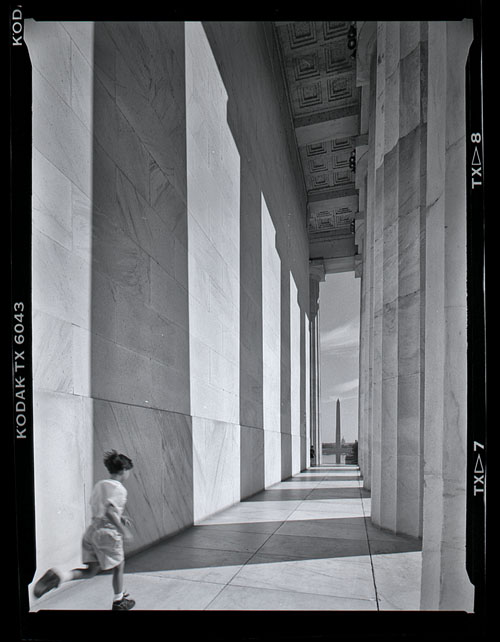No-margin framing, a case study. In 1990, I was working on what became the Alone in a Crowd series in Washington DC. I noticed some kids playing tag at the Lincoln Memorial. I set up my 6×9 view camera and lined up what I thought was a good background. I figured I left enough room… [Read More]
Previsualization heresy, part 6
Previsualization assumes follow-through. If you have an image in your mind when you release the shutter, and in processing the image you change your mind and take it somewhere else, that has to count as a failed previsualization. It may not be a failure as a photograph, however. There are two reasons why you might… [Read More]
Previsualization heresy, part 5
What are the barriers to a holistic approach to experimentation and image making? I’ve been talking about the blocks that we create in our heads when we accept previsualization hook, line, and sinker. There are other, more real obstacles. There’s the weight and bulk of photosensitive materials. If you’re backpacking with your 8×10, you probably… [Read More]
Previsualization heresy, part 4
Photography, like any art, improves with experimentation. Great photographs don’t usually come about as the result of extended navel-gazing sessions, but as the result of trying something, having it kind of work, making it better, exploring blind alleys, honing away unnecessary elements, and finally arriving at something worthwhile. The result of an experiment is, by… [Read More]
Previsualization heresy, part 3
Another aspect of previsualization is envisioning just the way the tonality of the actual scene will map to the tones in the final print before tripping the shutter. Ansel Adams’ Zone System is an orderly approach to both looking at the scene with that in mind and making the pre-exposure vision a reality. In moderation,… [Read More]
- « Previous Page
- 1
- …
- 494
- 495
- 496
- 497
- 498
- …
- 574
- Next Page »
